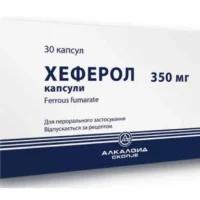Description
Aquadetrim vit. D3 (cholecalciferol) solution 10 ml. vial
Composition
Active ingredient: Cholecalciferol (Vitamin D3)
Other ingredients: Medium-chain triglycerides, ethanol, and purified water.
Mechanism of Action
Vitamin D3 acts as a prohormone that regulates calcium and phosphate metabolism in the body. It facilitates calcium absorption in the intestines and helps maintain optimal serum calcium and phosphate levels for bone mineralization. Vitamin D3 also exhibits immunomodulatory properties, impacting various immune cells and reducing inflammation.
Pharmacological Properties
The pharmacological effects of Aquadetrim vit. D3 include enhancing calcium absorption, maintaining bone health, and modulating immune responses. These properties make it a vital component for overall skeletal health and immune function.
Indications for Use
Aquadetrim vit. D3 solution is indicated for the prevention and treatment of Vitamin D deficiency in both adults and children. It is essential for individuals who require supplementation to maintain adequate Vitamin D levels for bone health and overall well-being.
Contraindications
Do not use Aquadetrim vit. D3 if you have a known hypersensitivity to any of its components. Consult a healthcare provider before use if pregnant, nursing, or taking other medications to avoid potential interactions.
Side Effects
Common side effects of Aquadetrim vit. D3 may include gastrointestinal disturbances, such as nausea or abdominal discomfort. In rare cases, hypersensitivity reactions or allergic manifestations may occur. Discontinue use and seek medical advice if any adverse reactions are experienced.
Usage Instructions
Before administration, ensure thorough shaking of the solution. Use the provided dropper to administer the prescribed dose orally. Follow the dosage instructions provided by your healthcare professional. Avoid exceeding the recommended dose without medical supervision.
Benefits Compared to Analogues
Aquadetrim vit. D3 offers a convenient oral solution with precise dosing, making it a preferred choice for individuals requiring Vitamin D supplementation. Its efficacy in correcting deficiencies and improving bone health parameters has been well-documented in clinical trials. Further comparative studies are needed to explore its advantages over similar products.
Suitable Patient Groups
Aquadetrim vit. D3 is suitable for use in various patient populations, including children and the elderly, who may have increased Vitamin D requirements or difficulties with traditional supplementation methods. It provides a reliable and effective means of maintaining optimal Vitamin D levels in individuals of all ages.
Storage and Shelf Life
Store Aquadetrim vit. D3 solution in a cool, dry place away from direct sunlight. Ensure the vial is tightly closed to prevent contamination. Check the expiration date on the packaging and do not use the product beyond its stated shelf life.
Packaging Description
Aquadetrim vit. D3 is available in a 10 ml vial, designed for easy and accurate dosing. The packaging is sealed to maintain product integrity and includes clear instructions for use. Each vial contains the necessary information regarding dosage and composition for user convenience.
Clinical Evidence and Proven Effectiveness
Studies have demonstrated the efficacy of Aquadetrim vit. D3 in elevating serum Vitamin D levels and enhancing bone health. Vitamin D supplementation plays a crucial role in calcium absorption and bone mineralization, emphasizing its importance in skeletal health. Regular monitoring of Vitamin D levels is recommended to ensure optimal dosing and therapeutic outcomes.





